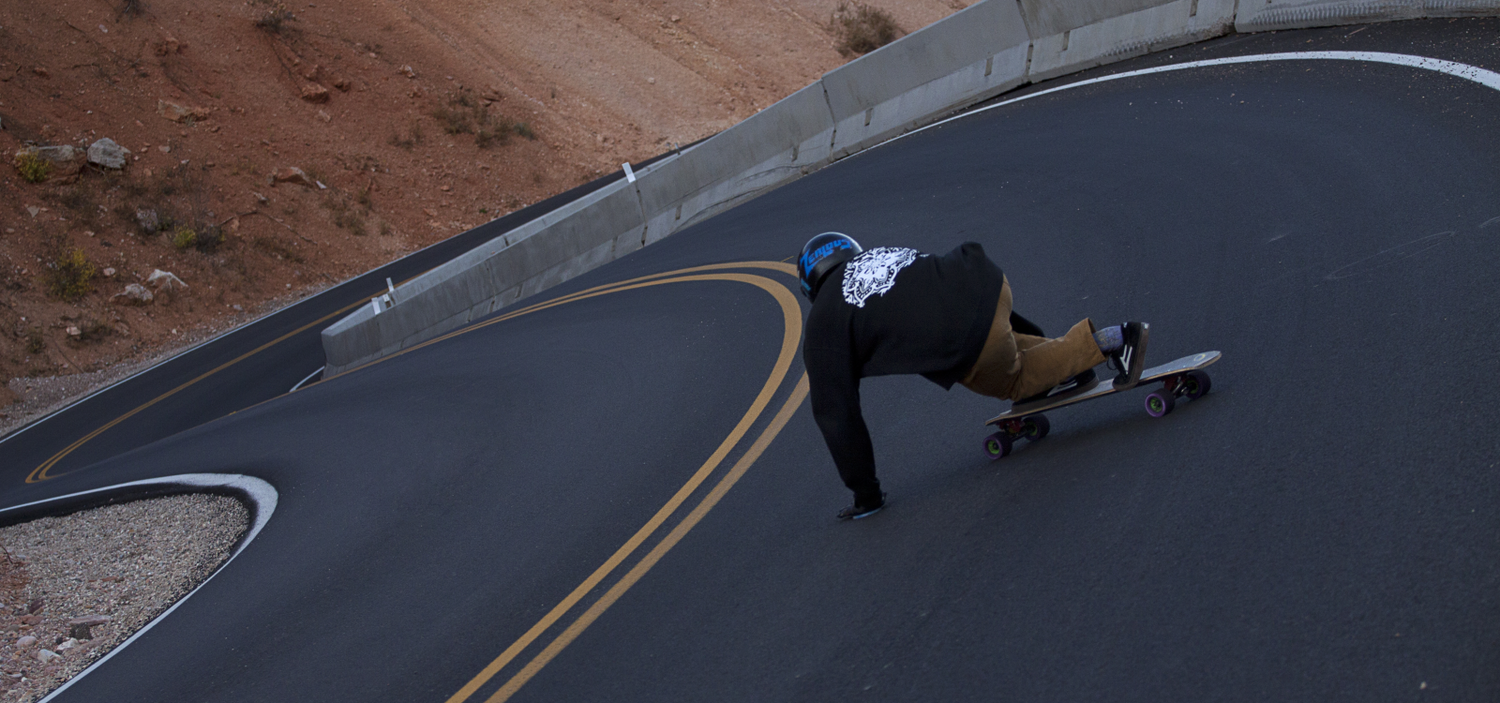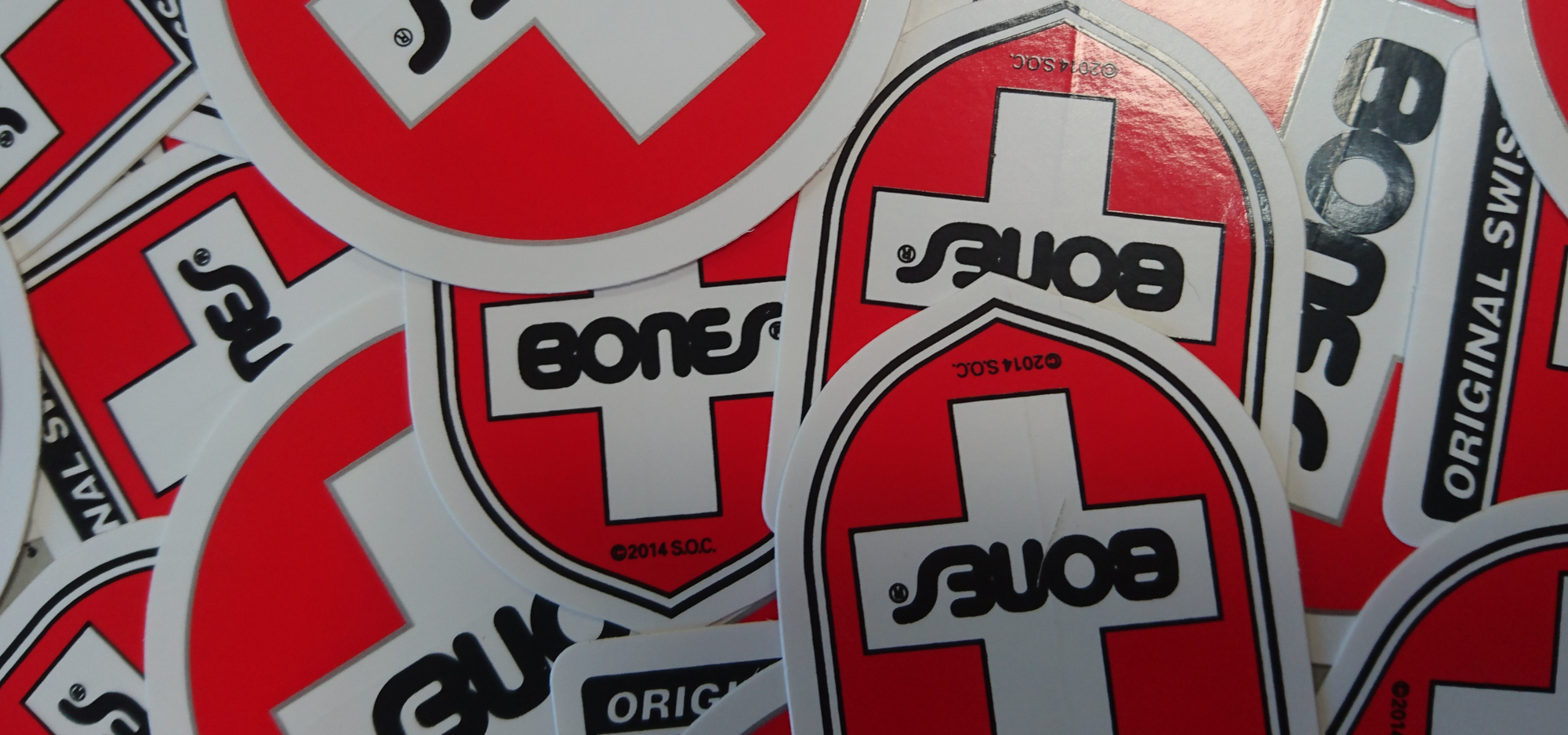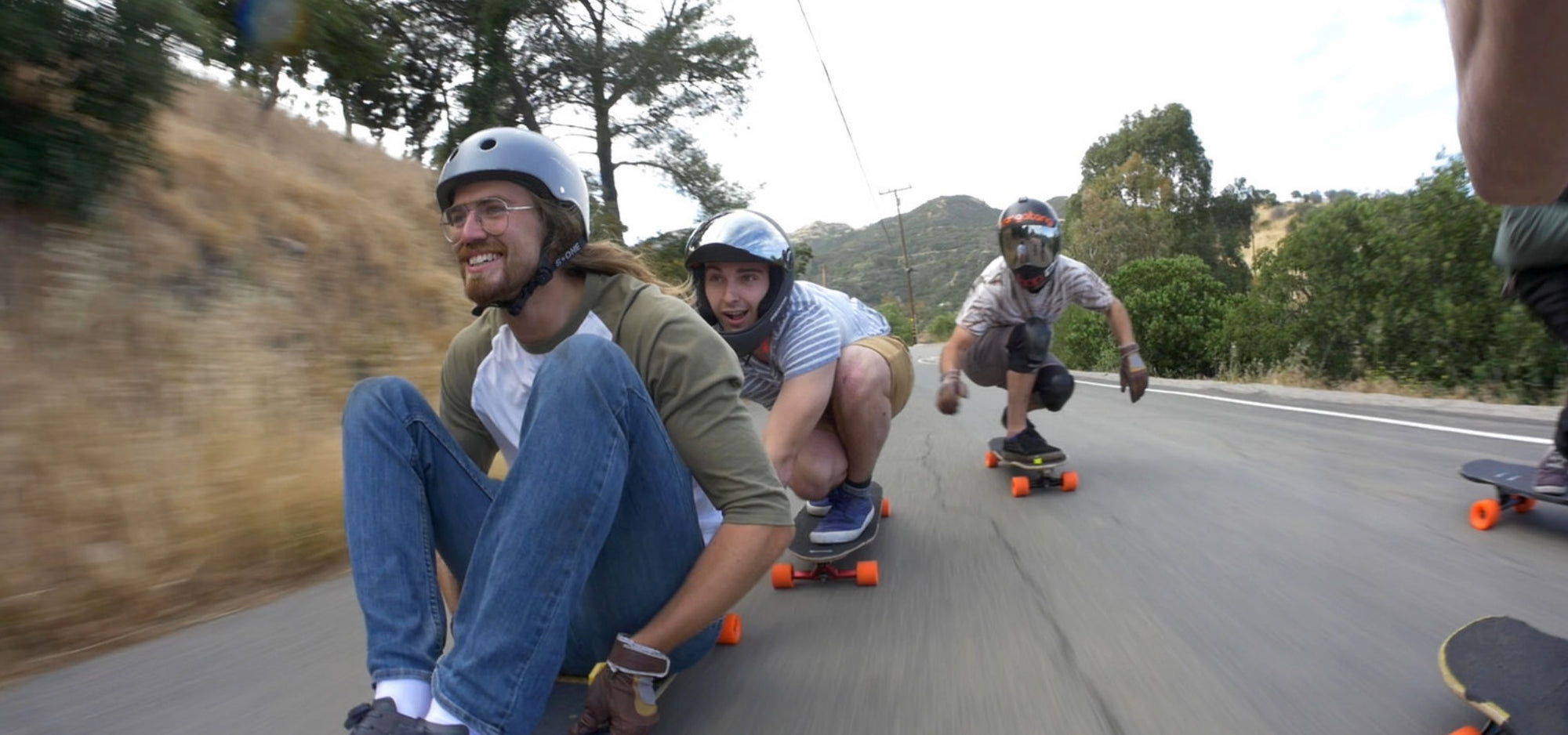Dialing in that perfect set up is the goal of ever longboarder, but how do you get the trucks to turn the way you want them to? One key aspect is picking the right baseplate geometry. Do that and your longboard trucks will make your set up ride like a dream.
If you're looking to pick up a set of trucks, you've probably already asked yourself this question. The brand of truck probably comes in several different baseplates and you have to make a choice among two or more.
In this article we will explain the geometry of a longboard truck and how that geometry can help you ride your best.

Baseplate Degrees
Truck baseplate degrees are most commonly measured as acute angles (less than 90 degree angle). Trucks are talked about being some truck width plus a degree measurement.
For example: Paris 180mm/50 Degree or Caliber 50 or 44. It is also common to hear people say "Did you get the 50s or 44s", referring to the baseplate measurement.
While there are many, many more degrees of trucks out there, these are the most common in the Reverse Kingpin category. To learn more about Traditional and Reverse Kingpin geometry, read our truck guide here.
Envision the Workings
Now I want you to image how a truck works.
You lean on the rail of the deck and the bushings within the trucks squish down. The truck hanger then turns and moves the wheels. The skateboard can now turns because the track of one wheel is shorter than the track of the other wheel.
Changing the baseplate simply changes how much turn you get from the wheels vs how much lean you get from the deck. No worries if you are a little confused so far. We have some pictures to help with the visualization.
Imagine the Extremes
Imagine both extremes: 0 and 90 degree baseplates.
First, the 0 degree. If you were to lean on a skateboard set up with this truck, you would lean as much as you possibly could. However, the skateboard would not turn! The deck would simply lean from side to side because the wheels move along a vertical axis.

Now think of the 90 degree baseplate. If you were to try to lean on a skateboard set up with this truck, you would not move at all (we'll get to why in the techy section below).

However, the truck would have the potential* to turn more than ever. Think about how much that hanger could swing back and forth around in the pivot cup and the effect that would have on skateboard turning ability.
What Does This Mean?
If you want your board to dart into a turn faster, choose a higher baseplate degree (ie 50 degree).
If you want to get side leverage over the trucks with your feet via leaning (to push into slides, etc) and not dart into turns as fast (helping to avoid speed wobbles), choose a lower degree (ie 40-45 degree).
The theoretic perfect middle would be 45 degrees, even though anything under a 50 degree is usually considered a lower degree baseplate as 50s were the standard for so long.

This is my first set of trucks, how on earth do I know what I want?! You will just have to learn through skating. Try out your friends' boards and see what you like. Think about choosing a truck like choosing a girlfriend. You have an idea what you want, but you don't really know what you want until you get out there.
Now this next part can get confusing, but is actually very interesting once you get it.
*Caveats to Truck Geometry (The Techy Stuff)
We starred "potential" in the paragraph above because with a 90 degree plate the skateboard, in fact, wouldn't even turn at all if you leaned on the truck.
This is simply because a skateboarder MUST lean in order to put leverage over the trucks to turn. Leaning is the very force that squishes the bushings and turns the hangers in the pivot cups. Take away all the lean, you can't turn by leaning.
However, if we were to set up some kind of alternative steering mechanism, the mechanism could move the wheels to turn to their full potential with the 90 degree baseplate installed.
Still lost? Try thinking of a unicycle. A unicycle has the full ability to turn in any direction without leaning in any direction because the wheel is pivoting 90 degrees (perpendicular) relative to the ground.
In addition, because the higher baseplate degree means less lean and lean is what gives leverage over the trucks in a turn, the higher baseplate degree, the more effort it takes to lean and turn. Whoa, ok back up... Let's break this down.

Think if we had a 85 degree baseplate. That five degrees means that we should be able to lean the board (at least a little) and turn a lot. However, the amount of force it would take from the lean to get the bushings in the trucks to compress allowing the hanger to move to turn is probably more than you can muster with your strength and weight in order to get any kind of effective turn (time to get 67.5a RipTide bushings!).
Because of this, you can run much softer bushings, yet still have a board that doesn't just lean all over the place the second you put a little tiny bit of weight on it. Additionally, the insane amount of turn you can get from high degree baseplates can make them ideal for front truck long distance pumping applications.
Recommendations
Here are some quick suggestions based on various longboarding disciplines. It should help you make a decision if you have absolutely no idea where to get started.
- Downhill - 44-50 degree truck. This is tricky as it will vary based on your personal style. If you want to hit higher speeds we recommend going with a 44.
- Carving - We recommend going with a 50 degree. This is a great balance of turn and stability.
- Pump - Angles on pumping decks are usually slightly different since the trucks used are Traditional Kingpin (TKP) instead of Reverse Kingpin (RKP). However, the concept is the same. Long Distance Pumping (LDP) set ups use a high degree in the front for max turn paired with a low rear degree for max lean. This allows the front truck to pump the board forward. Bennett Trucks are front truck turn machines and Tracker RTS are great for rear lean.
- Cruise - Again, we recommend going with a 50 degree. This is a great balance of turn and stability.
Wedging Trucks
Wedging involves putting an angled riser pad under the truck to change the angle of the hanger rotation. Any truck baseplate angle can be changed by wedging. This allows for TONS of customization as the wedging combinations are virtually limitless. That being said, for most skateboard applications, wedging is not needed.
Concluding
Locking in that perfect balance of turn and lean will make your set up perform the best it can. Take the time to research what your board needs and how you want to ride. You will have a lot more fun in the long run and save time/cash from getting multiple sets of trucks.
We hope this helped you understand the mystery of truck baseplate geometry and the turn vs lean debate. If you just have comments/suggestions on our article, shoot us an email at help@stokedrideshop.com. We're always stoked to hear from you.








